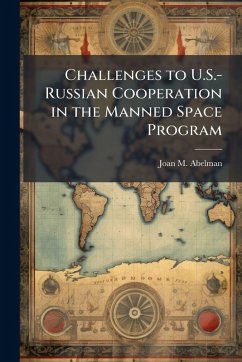
The Challenges of Budgeting for Defense in an Era of Uncertainty and Unpredictability
Versandkostenfrei!
Versandfertig in über 4 Wochen
14,99 €
inkl. MwSt.

PAYBACK Punkte
7 °P sammeln!
Does the Department of Defense have adequate funding to meet its requirements? Does it have what it needs to defend the interests of the United States? Does the defense budget need to increase, or can the Department accomplish the National Military Strategy with less? Finally, what threats are driving defense budgets today and what type of military force is required? On the surface, these questions seem easy to answer, but in reality, they are quite difficult. They are difficult because of the uncertain and unpredictable environment in which today's Department of Defense operates. The "comfort...
Does the Department of Defense have adequate funding to meet its requirements? Does it have what it needs to defend the interests of the United States? Does the defense budget need to increase, or can the Department accomplish the National Military Strategy with less? Finally, what threats are driving defense budgets today and what type of military force is required? On the surface, these questions seem easy to answer, but in reality, they are quite difficult. They are difficult because of the uncertain and unpredictable environment in which today's Department of Defense operates. The "comfort" days of the Cold War, where the United States required a large conventional force to deter a major state actor are long gone. Currently, no strong nation state threatens the United States. Will this remain true in the future, or will an emerging power, such as China, grow to threaten US interests and those of its allies? Will the United States continue to face irregular warfare threats from weak or failed states, terrorists, or other non-state actors? Will the successes of current terrorist groups embolden others to do the same, and what kind of military force is required to meet these uncertainties? This work has been selected by scholars as being culturally important, and is part of the knowledge base of civilization as we know it. This work was reproduced from the original artifact, and remains as true to the original work as possible. Therefore, you will see the original copyright references, library stamps (as most of these works have been housed in our most important libraries around the world), and other notations in the work. This work is in the public domain in the United States of America, and possibly other nations. Within the United States, you may freely copy and distribute this work, as no entity (individual or corporate) has a copyright on the body of the work. As a reproduction of a historical artifact, this work may contain missing or blurred pages, poor pictures, errant marks, etc. Scholars believe, and we concur, that this work is important enough to be preserved, reproduced, and made generally available to the public. We appreciate your support of the preservation process, and thank you for being an important part of keeping this knowledge alive and relevant.












